Kyrenia Castle (Turkish: Girne Kalesi), is located at the east end of Kyrenia harbour. Its current shape was built by the Venetians in the 16th-century but it has at least 800 years of occupation. Within its walls you will find a twelfth-century chapel, a museum dedicated to the soldiers who occupied the castle throughout its history, the shipwreck museum, the dungeons as well as a café, gift shop and restrooms.
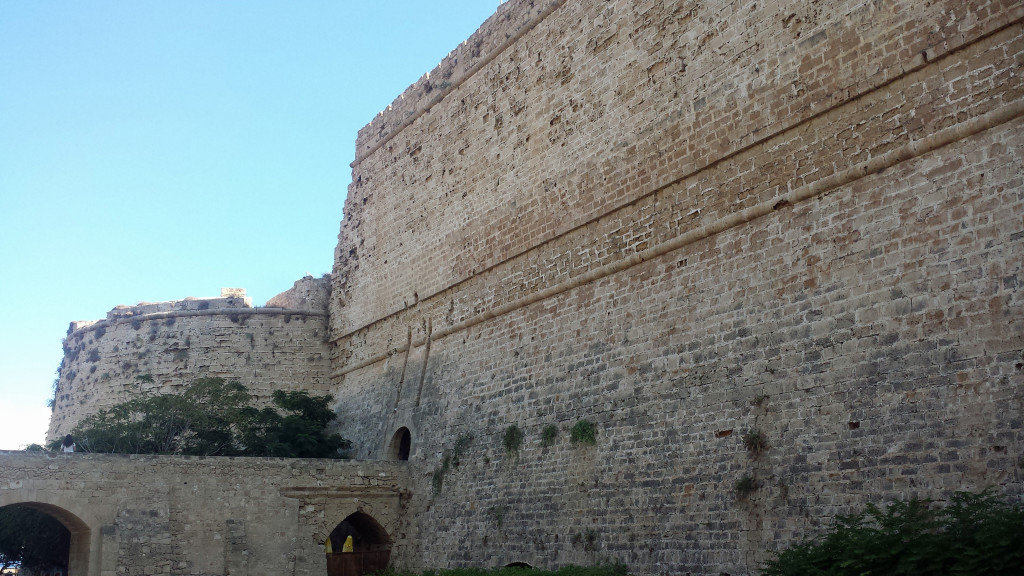
Kyrenia Castle ![]()
The history of Kyrenia castle
From the outside, the main noticeable structures of the castle are the large round towers which were built by the Venetians around 1550 AD.
These were turbulent times where heavy cannons ruled and the old square towers were easy to breakdown during a siege so the Venetians uprated the towers and made them round. A round tower deflected a cannon ball better than a square one and were stronger. The Venetians also built many gun ports on three levels where they could direct their gunfire toward any attackers on land.
Many parts of the original Crusader structures can still be seen inside the castle. The original Crusader castle was built between 1200 AD and 1480 AD and during the Medieval era attacks were made with swords, spears bows and arrows, and various stone-throwing machines like trebuchets. So look out for square structures and arrow slits whilst wandering around.
Kyrenia Castle Map
A guide to Kyrenia castle
To enter the castle you must purchase your tickets at the office located at the front of the ramp which would of originally had a drawbridge over the moat (now a road). You then walk through the main gate and head up a paved path.
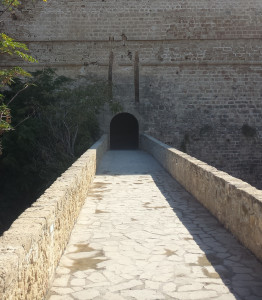
Kyrenia Castle main gate
About half way up this accent on the left hand side you will notice a sign to the old original Byzantine church dating to around 1170 AD. This church used to be outside and free standing until the Venetians built around it with what is now the north west tower.
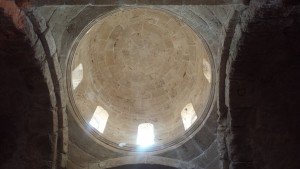
Byzantine church from the inside
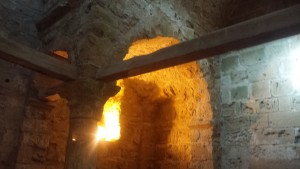
Byzantine church from the inside
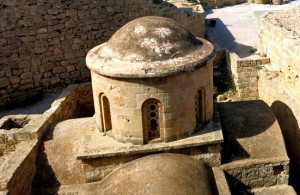
Byzantine church from above
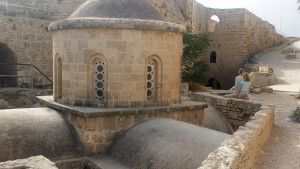
Byzantine church from above
Once you have visited the church head back to the sloping path and you now have the choice of turning left and continuing up to the ramparts where you will get a splendid view of Kyrenia harbour and the sea or you can continue up the top under what is now the archeologist office and into the castle courtyard.
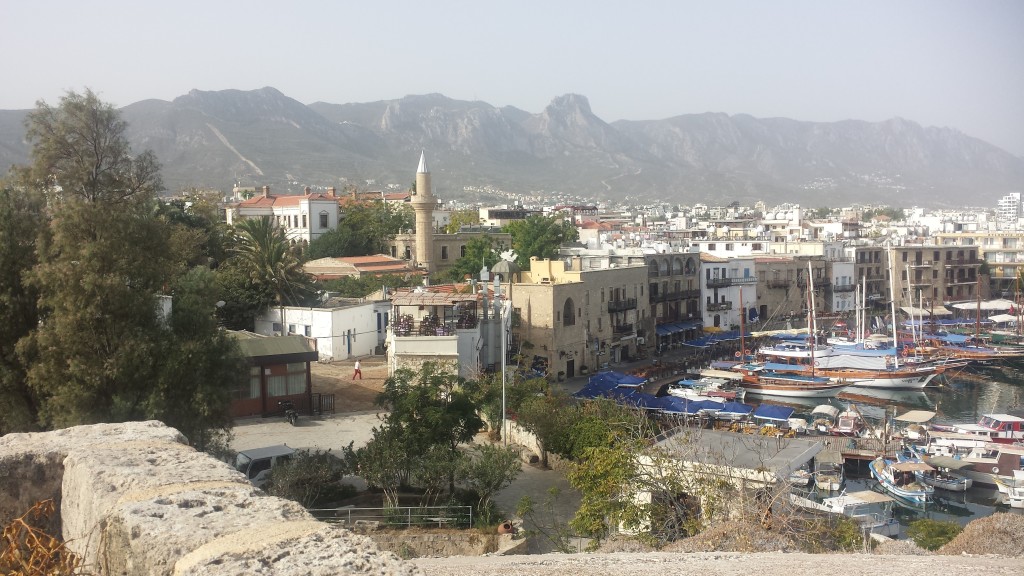
View from Kyrenia Castle ramparts ![]()
If you choose to go up to the ramparts you will see the top of the Byzantine church. If you choose to walk up towards the castle courtyard look out for the burial coffin of the famous Ottoman Admiral Sadik Pasha.
The tomb of Ottoman Admiral Sadik Pasha ![]()
While walking up towards the castles courtyard you will pass many nice architectural stonework and features.
The castle courtyard is a huge open space, all the other visitor attractions are accessed from the courtyard.
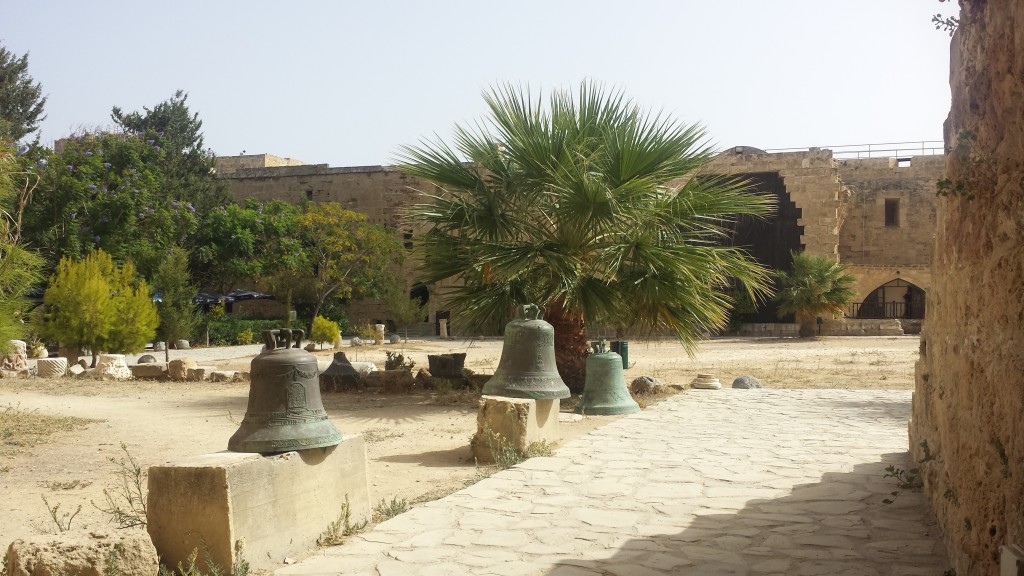
Kyrenia Castle courtyard ![]()
Once you are into the courtyard you have the choice of visiting the dungeons, the shipwreck museum or the various rooms and towers with displays. There are also toilets in the courtyard and a cafe and gift shop. The cafe sells ice-cream, juice, teas, coffees and snacks.
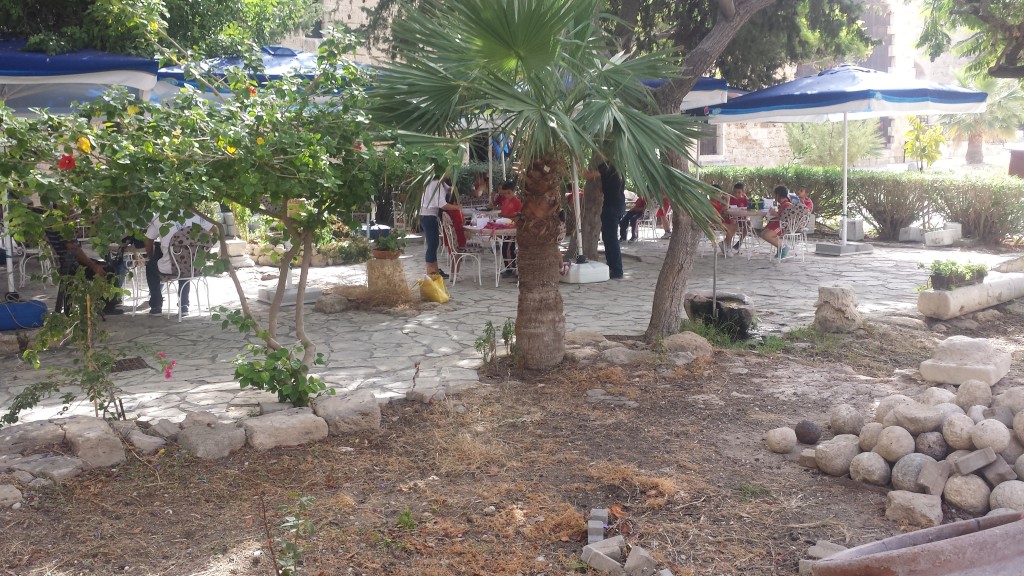
Kyrenia Castle cafe nice and shaded ![]()
Kyrenia Castle Dungeon
The dungeons are located on the west side of the castle. The dungeons were built during the Lusignan period and consist of rooms and pits were the prisoners were kept.
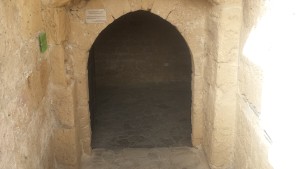
To the dungeon
In the rooms there are mannequins that are dressed up as guards as well as prisoners which have been locked in the pits.
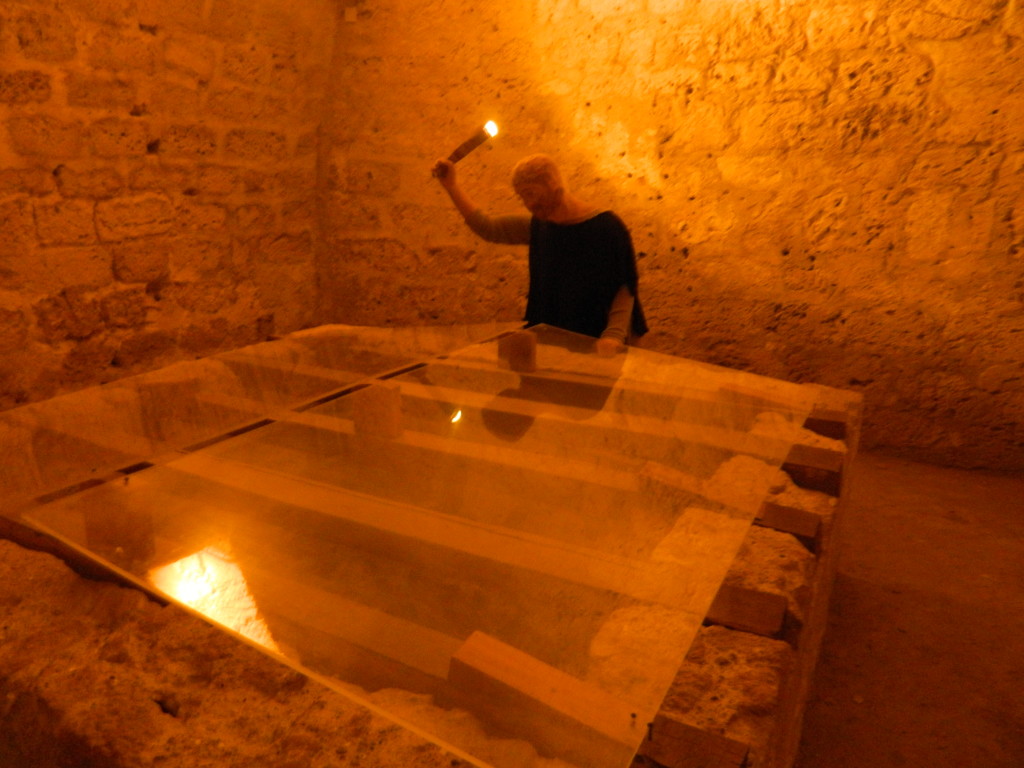
Kyrenia castle dungeon. Guard looks down the pit ![]()
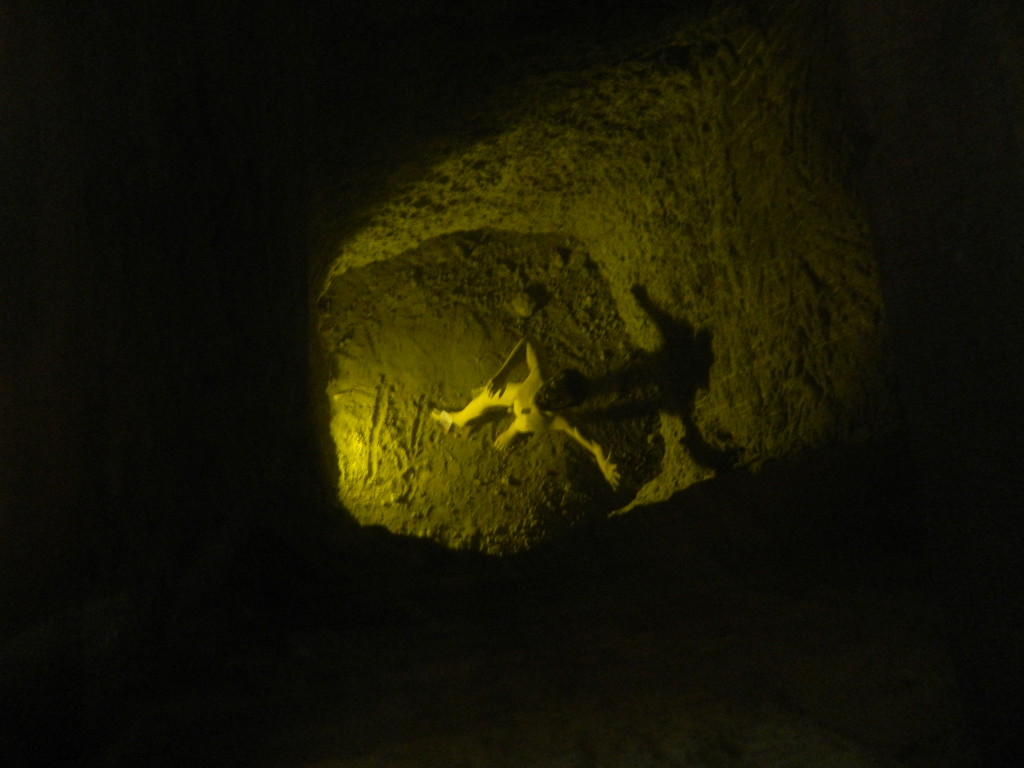
Kyrenia castle dungeons. Prisoner in the pit ![]()
The dungeons probably held many notable prisoners over the years but one person that is known to have spent time in the dungeons was Peter I’s mistress Joanna l’Aleman. Joanna was said to be heavily pregnant with Peter’s child. While Peter was away from Cyprus his wife the Queen, Eleanor of Aragorn had her tortured hoping to encourage a miscarriage. When this failed, she was sent home. Legend says after the child was born the queen had it brought to her and it was never seen again. Joanna l’Aleman was then thrown into the dungeon jail. When Peter heard about this he was furious and wrote to the Queen, she then decided to release Joanna from the dungeon but sent her to a convent. Peter returned after a year and had her released. Peter was killed soon after by three of his knights whilst in his palace of La Cava in Nicosia and was buried in the church of St. Dominic’s of Nicosia.
After visiting the dungeons you should probably visit the shipwreck museum next.
The Shipwreck Museum
As the shipwreck museum is a full attraction on its own we have added a dedicated page to it. Please visit this page to find out more about the shipwreck museum.
The North East tower
The north east tower was a tower built during the Lusignan era. It can be found to the left of the shipwreck museum.
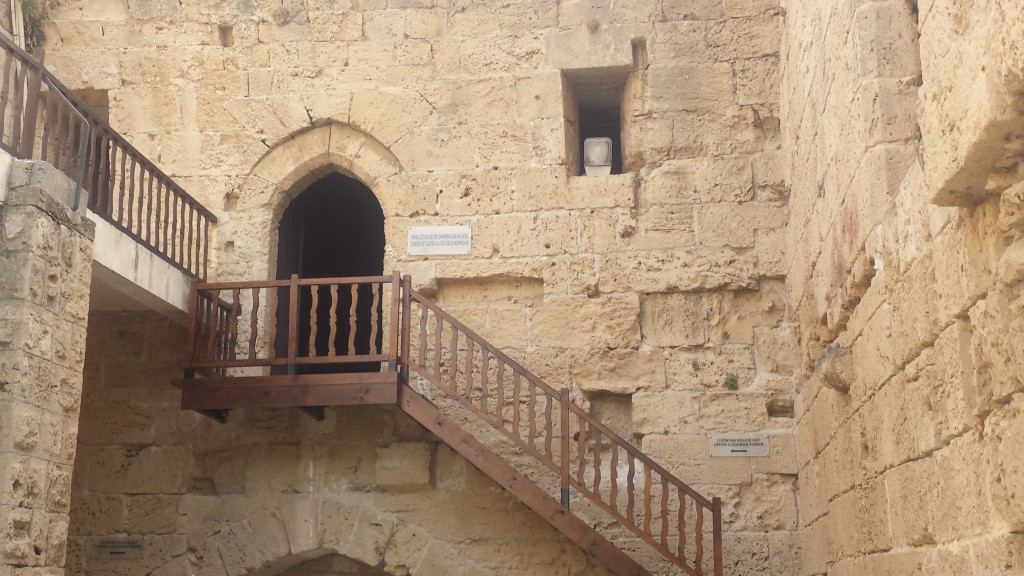
Access to the North East Tower ![]()
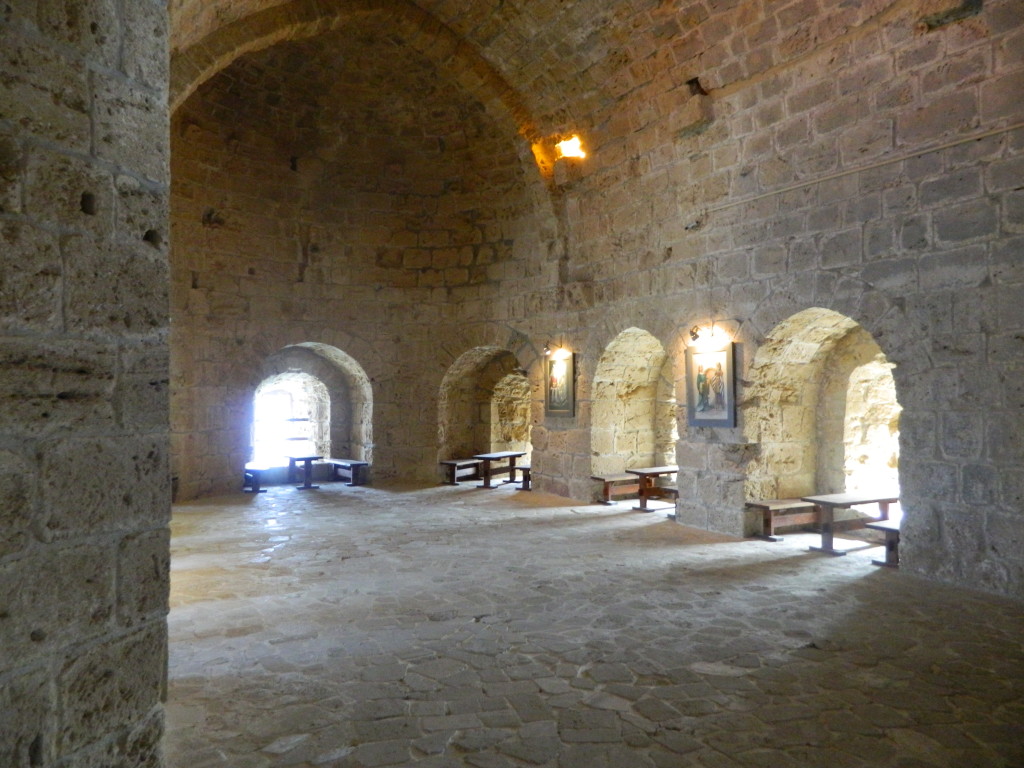
North East Tower ![]()
It is a large round tower with nice views over the sea A section of it currently has a display of all the different types of soldiers that have been based at the castle during the years.
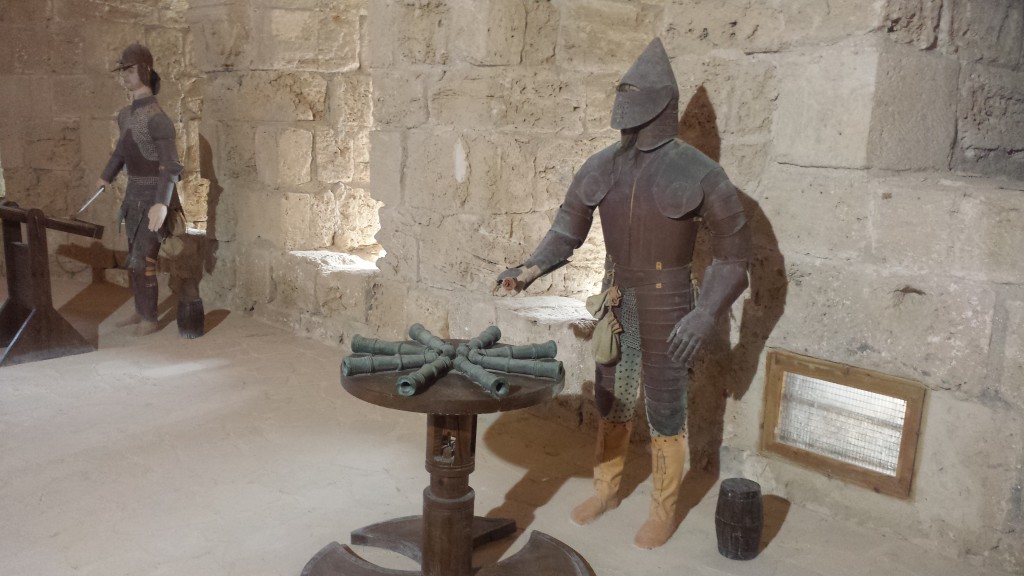
Lusignan soldier with a primitive early multi gun ![]()
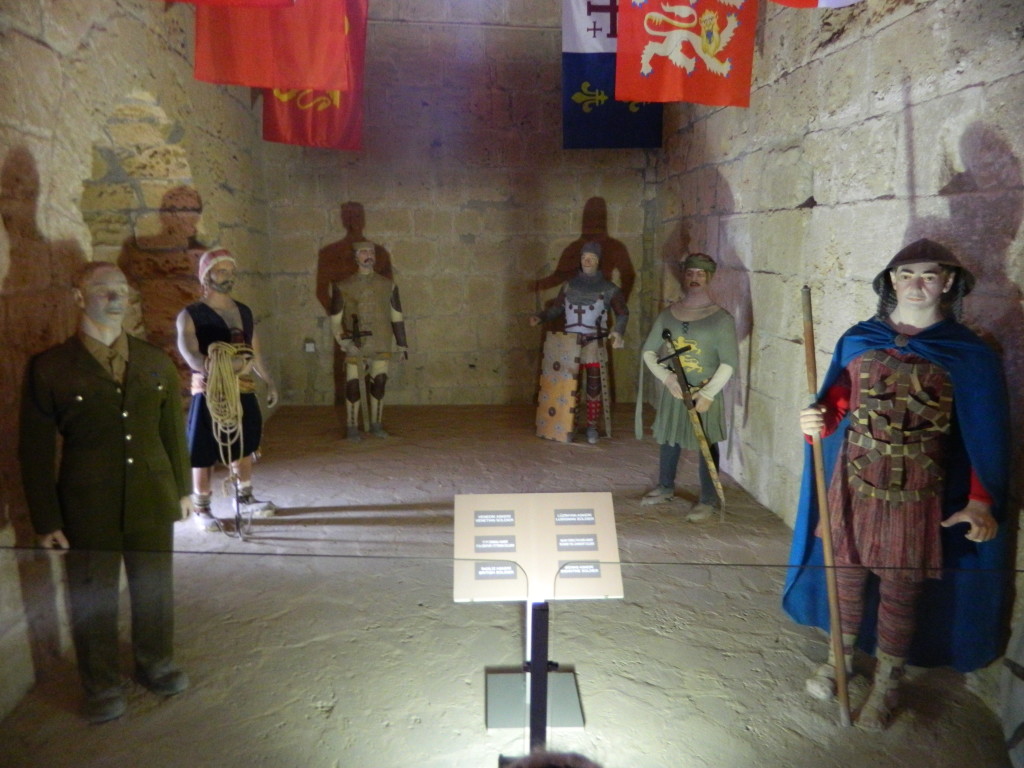
Soldiers of Kyrenia castle ![]()
From left to right the soldiers displayed are a British soldier, a 17th century Ottoman soldier, a Venetian soldier, a Lusignan soldier, a soldier of Richard the Lion Heart and a Byzantine soldier.
Venetian tower
The Venetian tower can be found in the bottom south east end of the tower. This tower was built by the Venetians to protect the castle against land attacks.
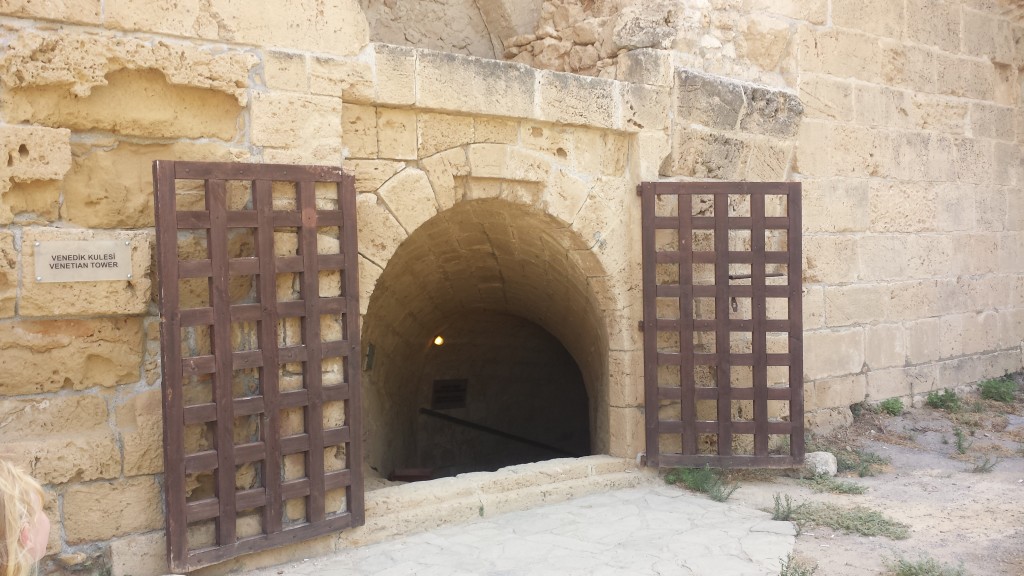
Access to the Venetian tower ![]()
Access to the tower is through a vertical ramp which leads to a rectangular room with air vents in its roof which is located below the level of the courtyard. On both the south and east walls of the room there are place for the storage of cannon balls. These cannon balls were discovered during the British colonial period and bear all the military characteristics of the Venetian period.
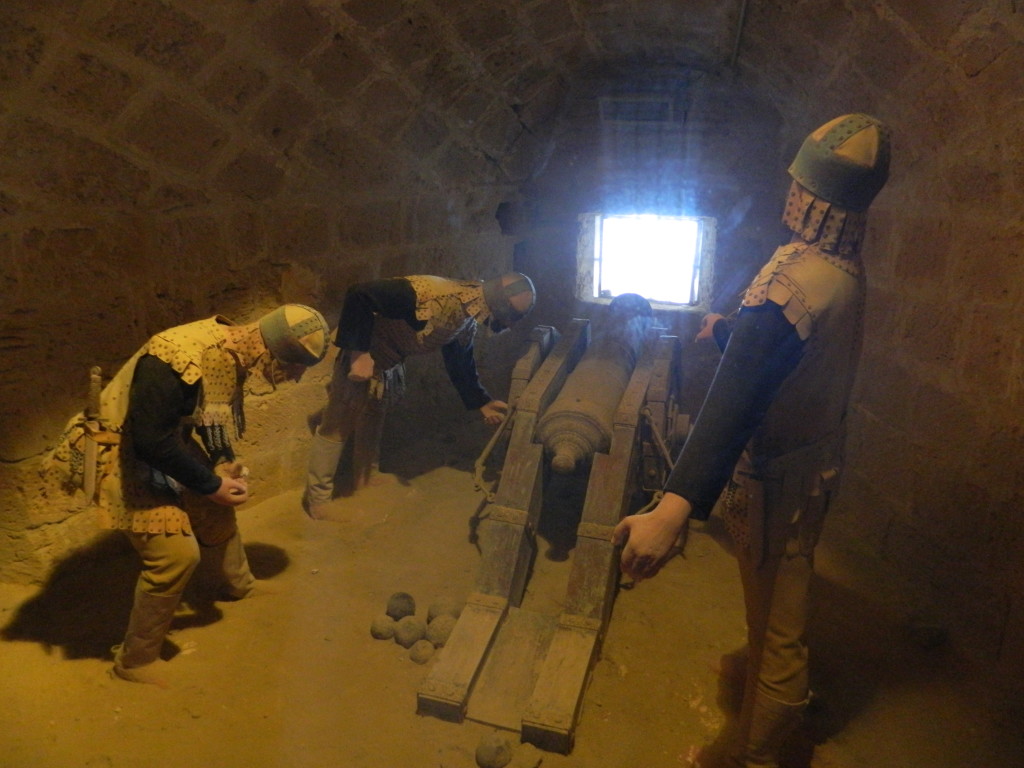
Venetian soldiers preparing to fire cannons ![]()
In the main room you can see Venetian soldiers preparing to fire cannons whilst others carry gun powder and others rest.
The Cistern
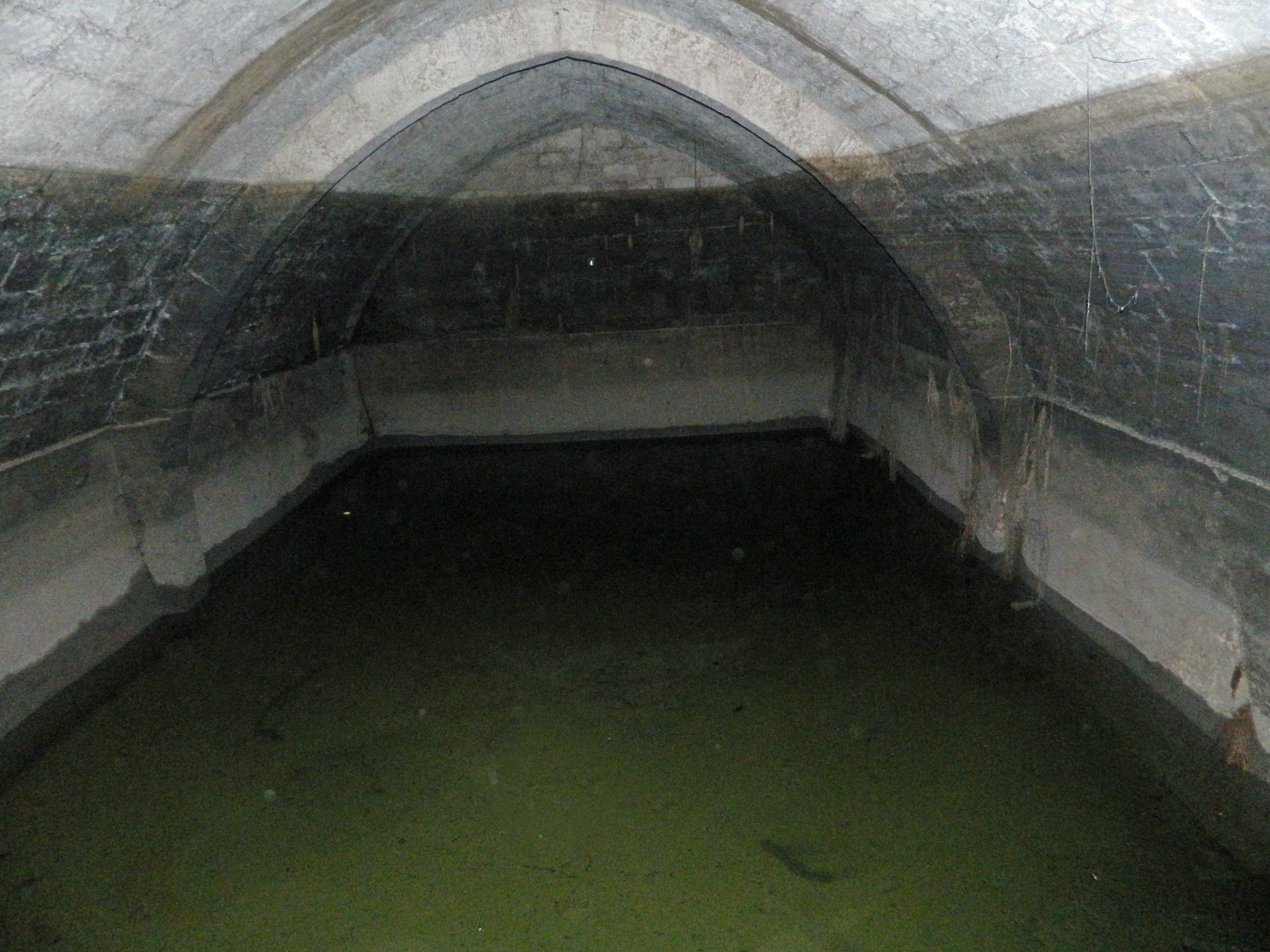
Kyrenia castle cistern ![]()
The cistern is located in the middle of the courtyard and this is where the occupants of the castle got their fresh drinking water. Having a cistern is very beneficial in a castle because if the castle is under siege it means you can hold out for longer as you have an internal drinking water supply.
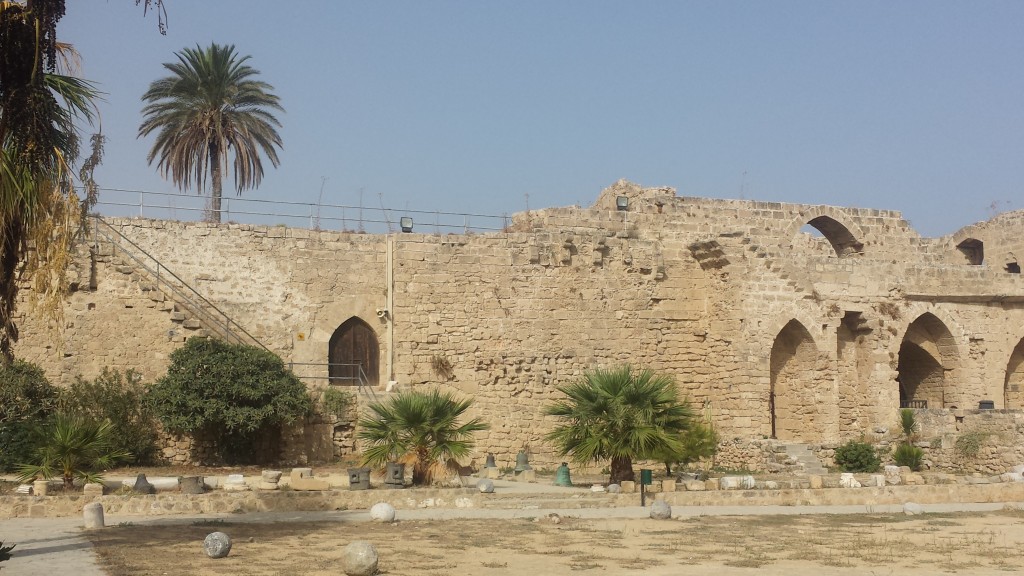
Kyrenia Castle from the courtyard ![]()
You may also find interesting:
References
http://en.wikipedia.org/wiki/Kyrenia_Castle
http://www.stwing.upenn.edu/~durduran/drky2.html
http://en.wikipedia.org/wiki/Peter_I_of_Cyprus

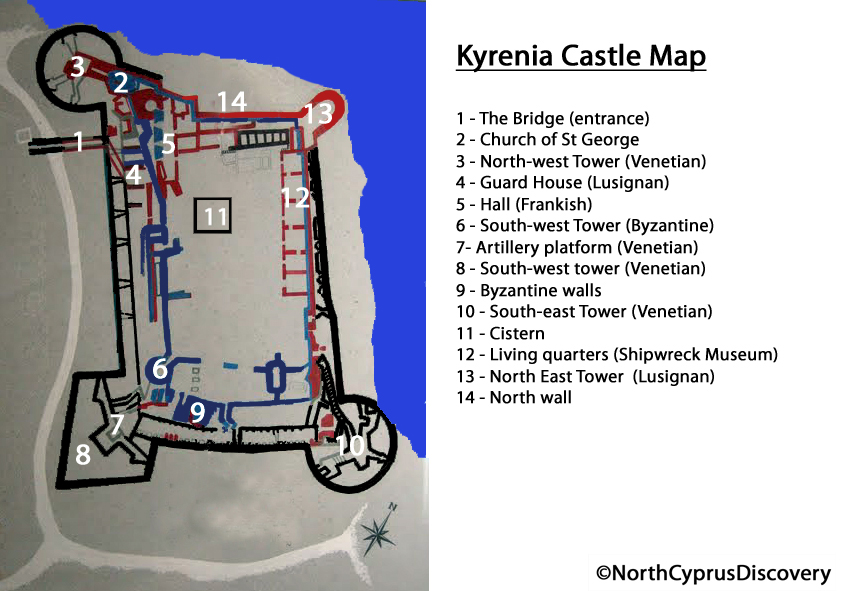
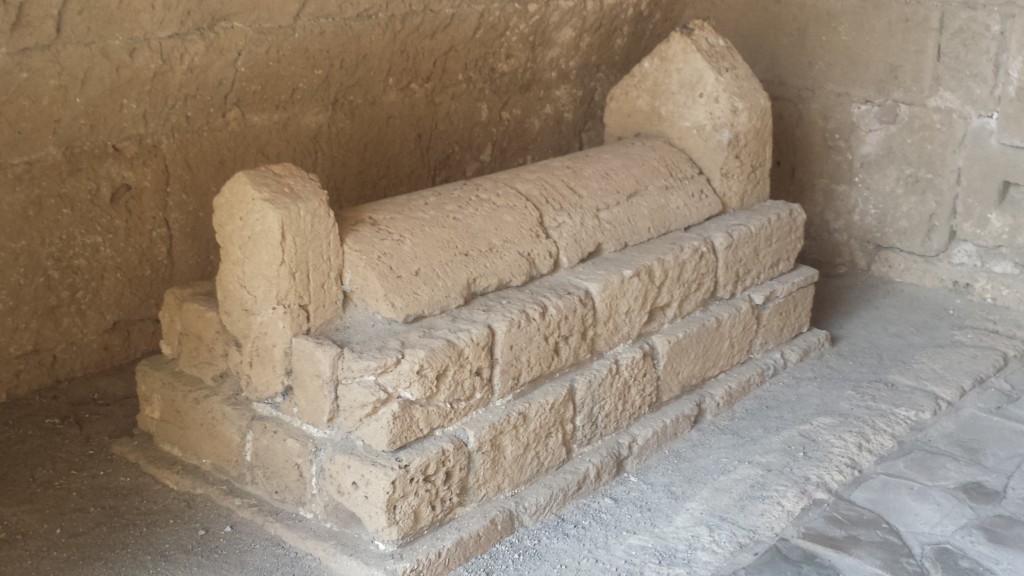
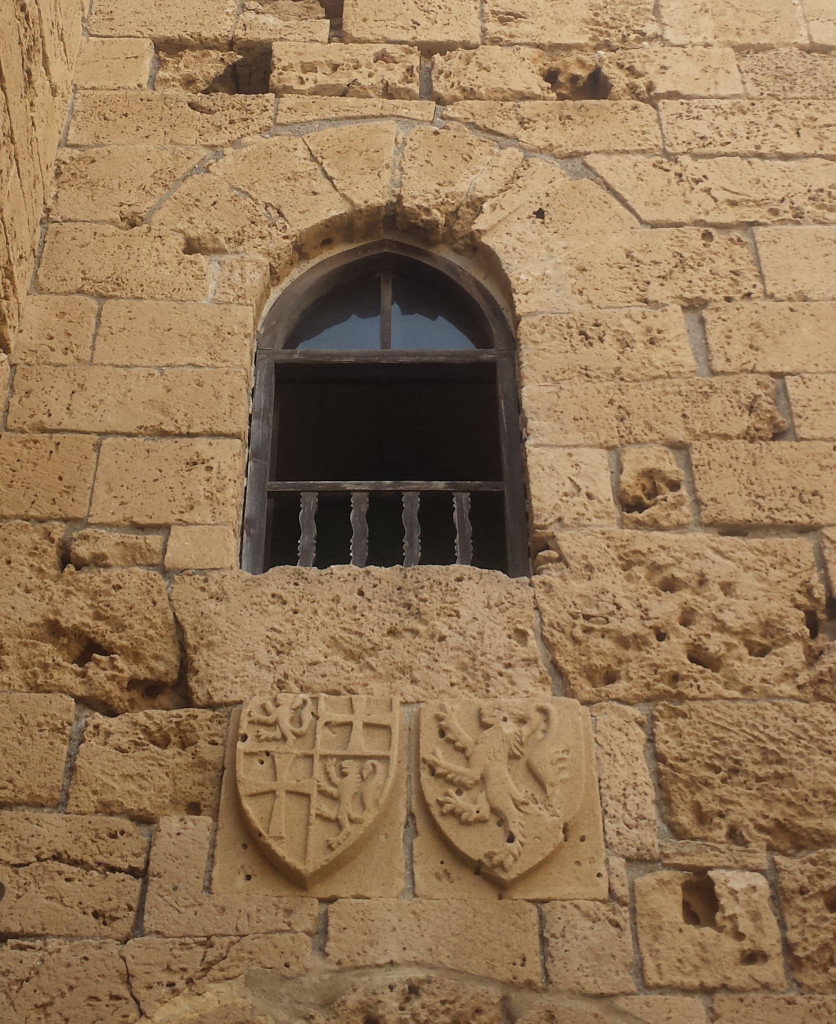
Precisely what I was searching for, appreciate it.
I really love your web site, great article, Thank you!
Thankyou for sharing the information with us.
Interesting …